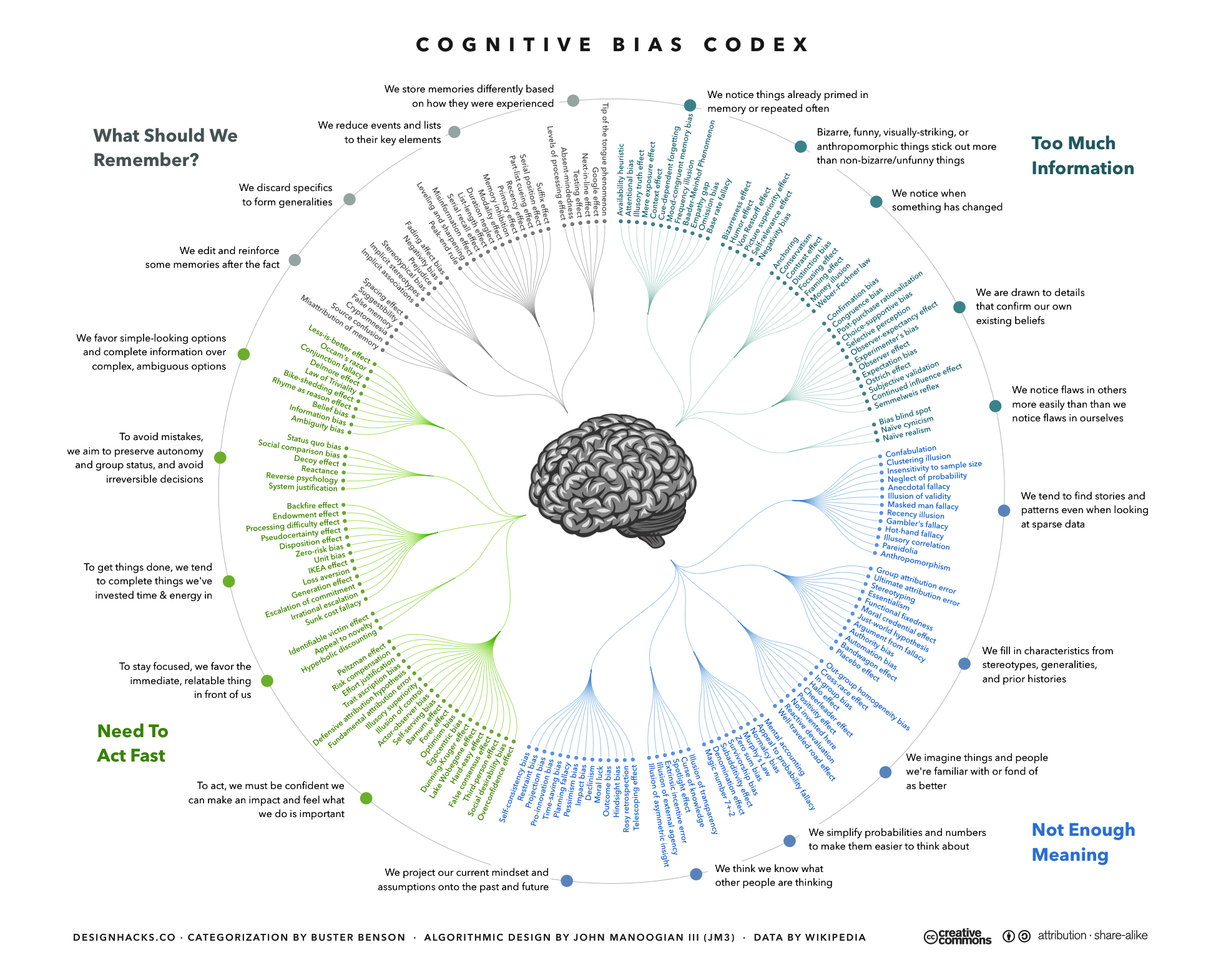WARNING: Everything you read is influenced by biases.
Software Project Communication – between business people and software people
We all have heard about biases and know biases influence how we think and how we behave.
Yet, most people don’t spend too much time thinking about the extent of biases or the cost of biases.
People involved in software projects, do not spend time thinking about their biases. Most people involved in software projects recognize there are communication differences and disconnects. Many people conclude that those communication differences and disconnects exist because some people are “tech people” while other people are “business people”. They believe these two groups have significantly different viewpoints and that’s just the way it is.
Susan Cramm wrote a very good book on the tech-versus-business disconnects and how they can be remedied: ‘8 Things We Hate About IT’.
That book did an excellent job of addressing what I would describe as group-think disconnects. Today, agreeing that the group-think problem Susan Cramm described in detail is directionally correct, I am thinking about practical ways to help people obtain their goals when they work on software projects. Yes, as a rule, “business people” and “tech people” think and behave in diverse ways. So, managing communication between groups is important work. You will achieve significant project savings when you maintain group-to-group communication.
Of equal significance, each one of us, every human being, thinks and behaves in diverse ways.
Software Project Communication – individuals’ biases
For software projects that involve smaller groups of people, say less than a total of 20 business and tech people, I have found it easier and more effective to begin by approaching individuals and their biases.
Like most things in life, biases are complicated. Psychologists have put thought and effort into studying, categorizing, and helping people understand biases. Here’s a link to one “List of Cognitive Biases”.
Here’s a nice little tool, [apparently] created by John Manoogian III, that will help you remember biases …
Very few of us are going to try to understand all those human biases or create methods to help people on our project teams understand their and their colleagues’ biases.
However, it is good to keep the CODEX in mind when we encounter differences and disconnects that are injuring group performance when tech and business people work together on software projects.
Software Project Communication – leading communication & performance improvements
When you are leading a software project:
- Understand every human being you work with has biases.
- Work to understand the biases you possess … as the ancient Greeks taught, “Know Thyself.” Observe your thoughts and actions and make the adjustments you think are necessary. [This is a big topic, for further discussion.]
- Observe the way people on your software team are interacting and identify differences that are causing disconnects. [Disconnects = things that are creating communication problems and causing projects to fail and not meet time deadlines, achieve budget goals, etc.]
- Talk with people [not at people]: be open minded and solution oriented; ask pre-planned questions to understand each person’s thinking … exploring, observing, not judging.
- Work to create ways to help the individuals “connect”. Help people understand that disconnects are normal, not right or wrong, and solutions are required. Mentor, guide, lead – do what it takes to help people “connect”. Help people experience success together rather than failure apart.


